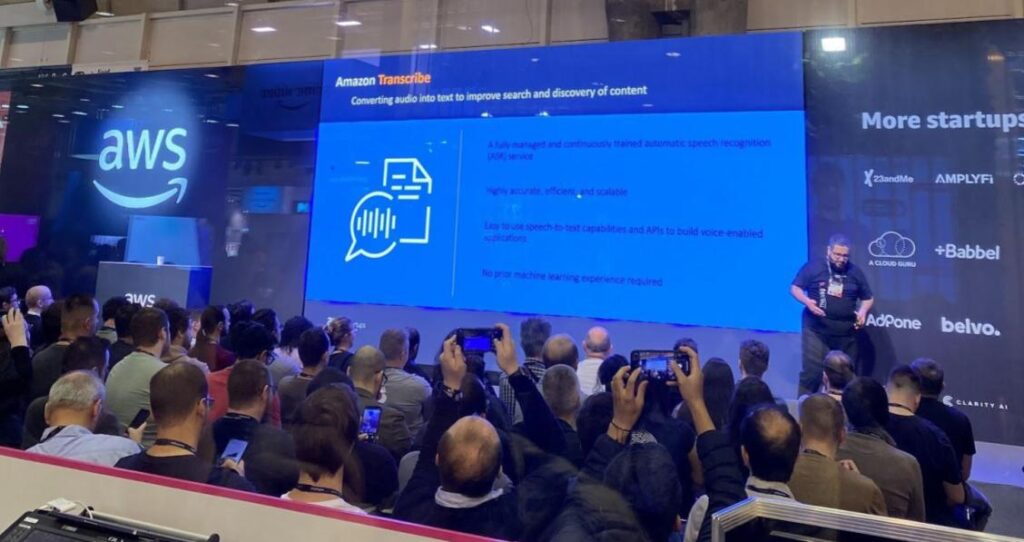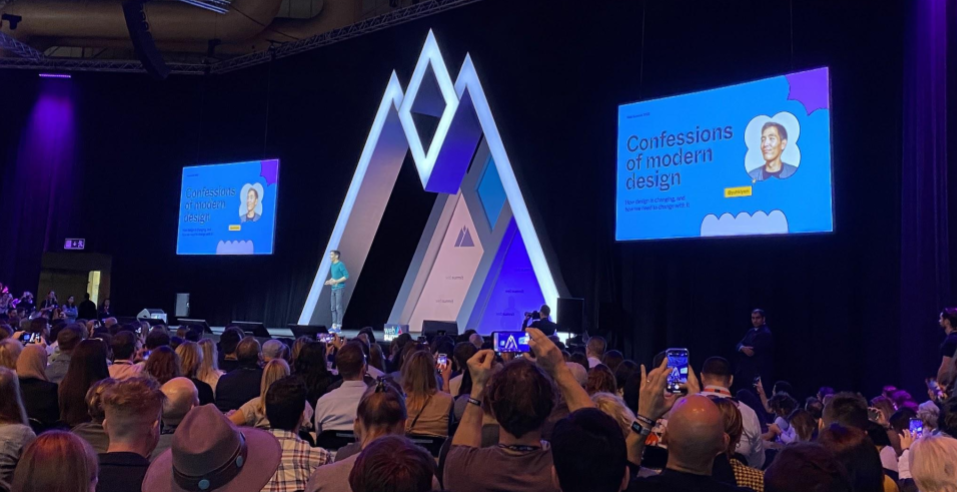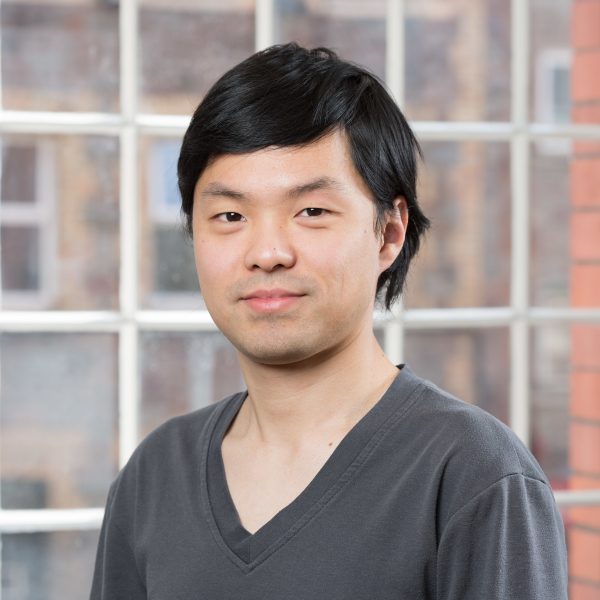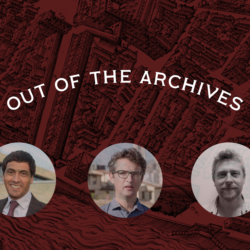Web Summit is an annual technology conference in Lisbon, drawing in over 70,000 people every year. Founded in 2009, the summit brings together people and companies “redefining the global tech industry” for a jam-packed schedule of talks, masterclasses, Q&As and demos, with topics spanning internet technology, emerging technologies, and venture capitalism.
The 2022 edition took place between 1 and 4 November, with partners ranging from Fortune 500 companies to start-ups and the conference floor hosting some of the biggest players in the industry (Google, AWS) as well as smaller companies showcasing new ideas and innovation, and representing new places to invest and attract talent. 
Our interest and concern for people, place and planet, and the opportunity to see how the global tech industry is approaching ethics, sustainability and responsible tech, is what took Calvium to Lisbon.
Three key themes emerged while I was there, which I hope will be as interesting and insightful for readers of this blog as they have been for the Calvium team. Let’s take a look at what Web Summit had to offer.
Responsible tech
The ethical and responsible use of tech, and its impact on people and the planet, is something Calvium is passionate about and a common theme of our blog, most recently in this piece exploring why innovation and ethical practice go hand in hand.
This is what drew me to the presentation from TED Talks founder, Chris Anderson, which opened up with a brief history of how Ted Talks started as a positive change movement through the internet in 2006, and how the internet landscape has changed since.
It then shifted its focus to the responsibility of tech companies and communities to stem the rise of online disinformation and to not fall prey to our “reptilian” brain instincts of seeking out news and online content that is doom and gloom. Anderson warned people to be wary of how modern AI algorithms tend to favour the more negative and controversial stories as they tend to get a stronger response in humans. While these algorithms were not necessarily malicious when they were designed and implemented, over time they have learned from interactions of users via likes, dislikes and comments, and can become very toxic and weaponised by the media.
To combat these problems, Anderson said there needs to be a shift in how apps and content are designed, for which he suggested four examples:
Time: Give users time to pause and think before commenting or making inflammatory comments. For example, Twitter once introduced a prompt asking users “Are you sure you want to post this?” when they wanted to post an expletive ridden tweet, which apparently reduced the number of inflammatory comments by around 30%.
Mindset: The internet is very good at creating echo chambers that reinforce our own ideas and beliefs in a way that makes us less understanding and accepting of different opinions. We need to be more curious and open-minded about other people’s thoughts and ideas.
Medium: Anderson explained that when people are able to interact with each other verbally, they tend to be more compassionate and open to discussion as opposed to texting. And so perhaps voice-based platforms have a role to play in making the internet a more inclusive and less harmful place in future.
Visibility: Tweak the algorithms to seek more positive human stories instead of letting people doom-scroll through a barrage of bad news. While there are examples of companies trying to bring more positive stories forward, such as the Centre for Humane Technology, it is going to take an industry-wide effort to really change the status quo. We would certainly like to see more positive stories, please.
Web3’s Molly White – Is Web 3.0 BS? was also a highlight for us developers, which looked at the expectation versus reality of Web 3.
I can only speak for myself, but when things were taking off in that space five years ago, it was mostly curiosity; at the time there wasn’t really anything to compare the idea of cryptocurrency and blockchain.
Over time, though, as more and more bad actors have emerged in this space, the scams, ponzi schemes and security concerns have become more and more apparent. In and of itself the idea of blockchain is a really interesting concept but like with many exploitable resources it has become abused over time and now it is a bit of a wild west. While the concept of regulation seems ironic given the promise of crypto being self-regulated, there need to be some checks and balances to stop people from abusing the technology for personal gain.
Ultimately, the reality of Web 3 is that it’s not quite the promised utopia – the internet is dominated by Meta and Google, there are countless crypto scandals, and it is difficult to even define what Web3 is anymore.
In the meantime, developers, users and creators need to be vigilant and have a collective responsibility to ask difficult questions to cut through the talk. For example, when starting companies and applications around blockchain, we need to question: is it too good to be true? Who are the people behind the companies and can they be trusted to do the right thing instead of chasing a quick buck?

Digital technologies for sustainability
This is, of course, an especially timely and important subject given the worsening climate emergency, and something else we have been focusing on a lot in our recent blogs – from looking at the role of digital technologies in green energy innovation to achieving Sustainable Development Goals and a net zero future.
A couple of talks really stood out in this area, highlighting both challenges and opportunities for various industries.
Transport and real estate
In ‘Plugging the planet: “What electrify really means”, Piyush Desay’s Michael Perschke explained the potential of hydrogen compared with electric batteries and why electric batteries are not the most efficient method for long distance trucking – namely hydrogen cells are a lot more efficient and not as heavy. Hybrid solutions for freight are being developed at the moment so that hydrogen is used for long haulage, and electric batteries used for last mile delivery.
However, there are some major obstacles to overcome: the energy grid remains a key challenge for the transportation industry, with mass adoption of hydrogen particularly difficult in the trucking industry. People are concerned about complexity, safety, cost and availability of hydrogen, while the fuelling network needs to be more robust and predictable, too.
With commercial buildings the biggest source of CO2 emissions, contributing around 40% of total global emissions, Perschke also looked at some solutions being developed to improve the efficiency of the procurement and running of these systems. He noted that a lot of the buildings that already exist are vastly inefficient and need to be upgraded/retrofitted with more efficient HVACs/lighting etc, and that the impact of these changes would have a huge impact on the decarbonisation of the built environment.
This is something Active Building Centre is working to address in the UK, which you can read more about here in our interview with ABC CEO, Dan Cook.
Innovation in F1
Another fascinating talk from Formula 1’s Toto Wolff, meanwhile, looked at some of the challenges with the physics of the racing car in the current season and various ways they are reducing carbon – for example, using support software and augmented reality glasses for employees/engineers to work remotely and in the field. Mercedes F1 has 90 engineers in the field and 1,000 in the factory, and so this helps engineers to see what the team sees, connecting in real-time between the team in the paddocks and the factory/lab.
Wolff explained the more you can do remotely, the less you need to ship and fly equipment and resources across the world. By implementing AR ‘Team Viewer’ technology, Mercedes has managed to save 37 megatons of carbon so far. It is also using Sustainable Aviation Fuel (SAF) and biofuel where possible to help achieve its net zero goals for 2030.
Wolff sees the winter season as an opportunity to experiment more with remote strategies. We certainly hope the high-speed innovation we are seeing in Formula 1 will spark the kind of innovation we urgently need to see in other industries.

Internal transformation
As a small company with big ambitions, we are always open to learning where we might be able to improve internal processes and design. I took a handful of potentially useful tips from various talks back to the office.
One of these talks was by Figma’s Yuhki Yamashita, which addressed how collaborative working on software can cause uncertainty as to when the design is ready because it’s always a work-in-progress. Yamashita offered three tips to overcome this uncertainty:
1) Review work at predictable cadence vs at perfect moment. E.g. Design reviews on Thursdays.
2) The form feedback takes is just as important as the feedback itself – long comments on a document can be daunting but friendly comments and suggestions make it easier on the designer to share more of their work as it progresses.
3) Be less precious about the work because everything is a work in progress.

Like Calvium, Yamashita is also a proponent of taking a people- and solution-first, problem-second approach to UX/UI, which is usually a cardinal sin in tech companies. For example, when Uber first came out (where Yamashita used to work), it would start with the user’s location and the user would have to work out the fare and how long it would take.
This is why community engagement and collaborative design is so fundamental when designing and developing digital technologies. In order to innovate for the benefit of society, we must design with people, not for people.
There was another interesting discussion on “crisis leadership” from leaders of companies such as Canva, Vanta and LaunchDarkly. My key takeaways from this talk were:
- Company culture needs to prevent crises from happening in the first place.
- Surround yourself with people who are wise and skilled in their fields.
- Make million dollar mistakes if they help to prevent billion dollar mistakes.
- Learn from failures and experiment to drive innovation – but do so with care! In our experience, iterative design usually helps to guard against any sizable mistakes.
Summary
It was great to see many of Calvium’s core interests around people, place and technology being explored by the global tech industry. It feels like there is a lot of positive momentum building across the sector and core issues around ethics and sustainability are becoming increasingly priorities for companies big and small.
I certainly left this year’s Web Summit feeling inspired and hopeful for a more responsible and sustainable future, and look forward to hopefully seeing evidence of continuing progress in these areas at future Web Summits.
In the meantime, please do get in touch with us to discuss product innovation needs and how we can help you develop more sustainable solutions.








